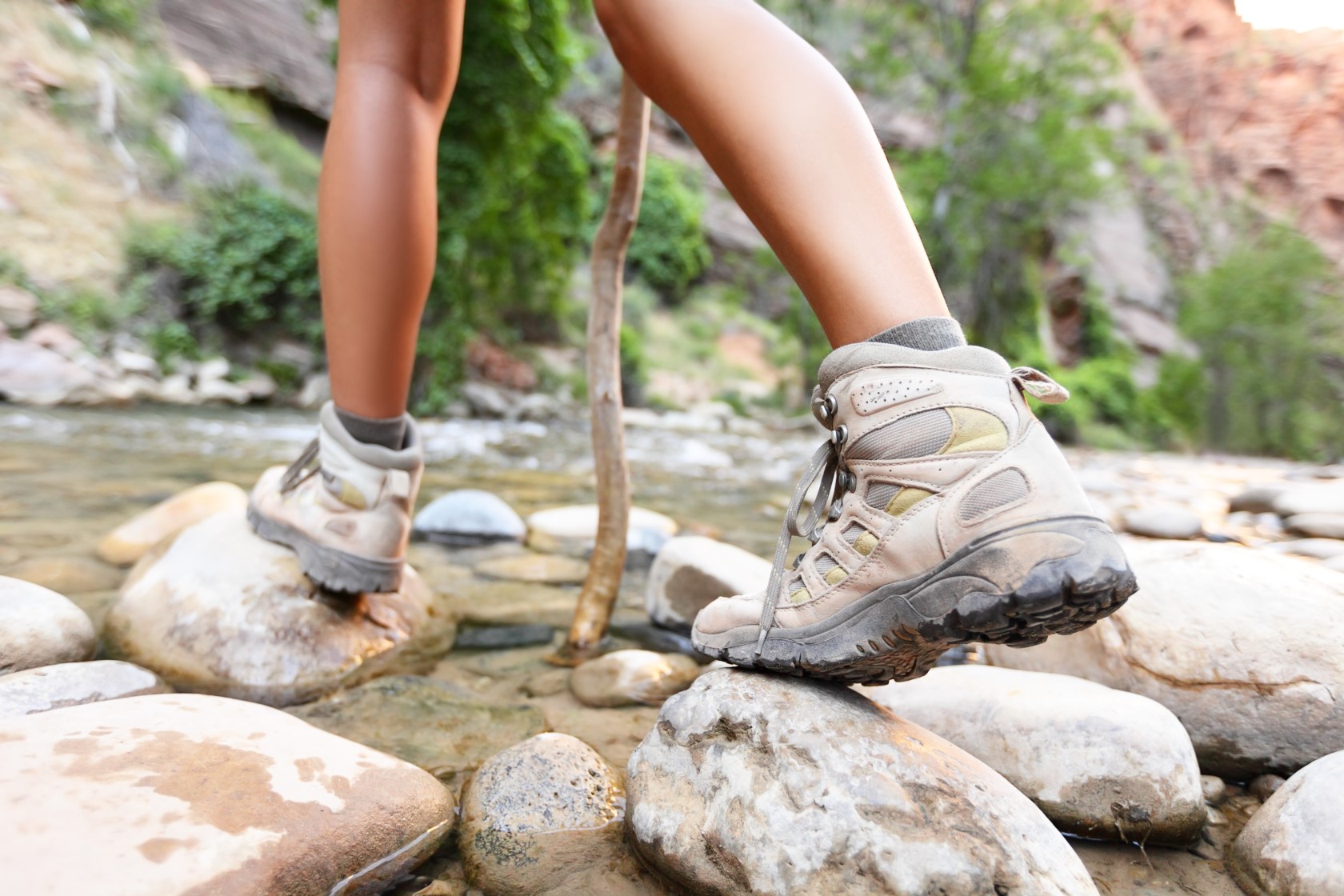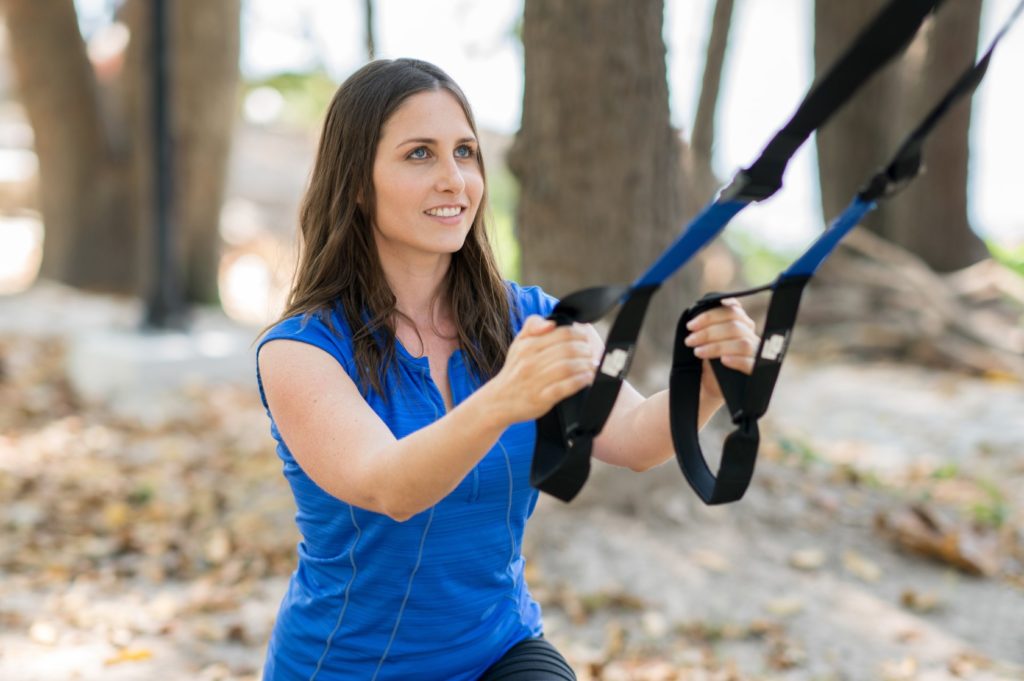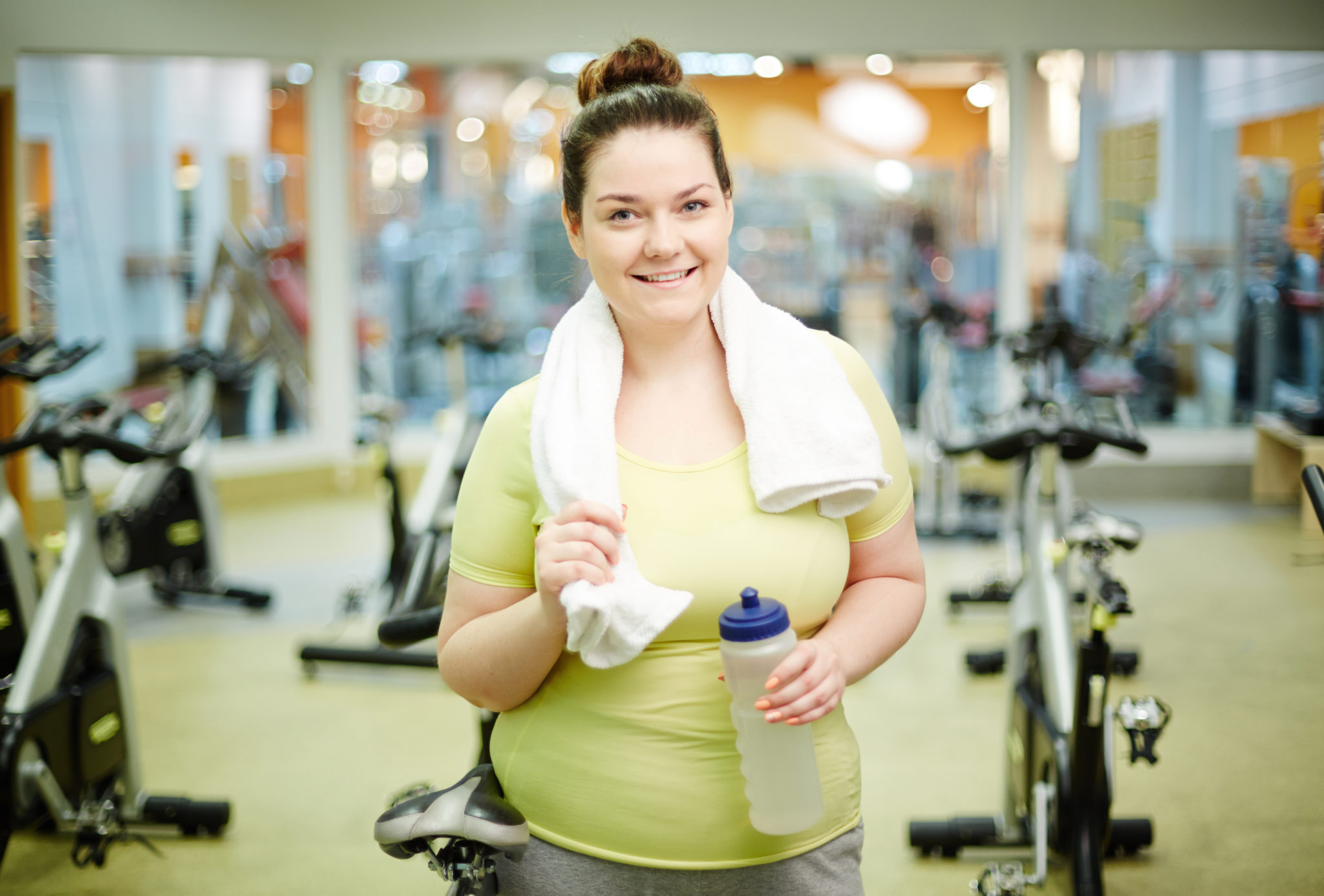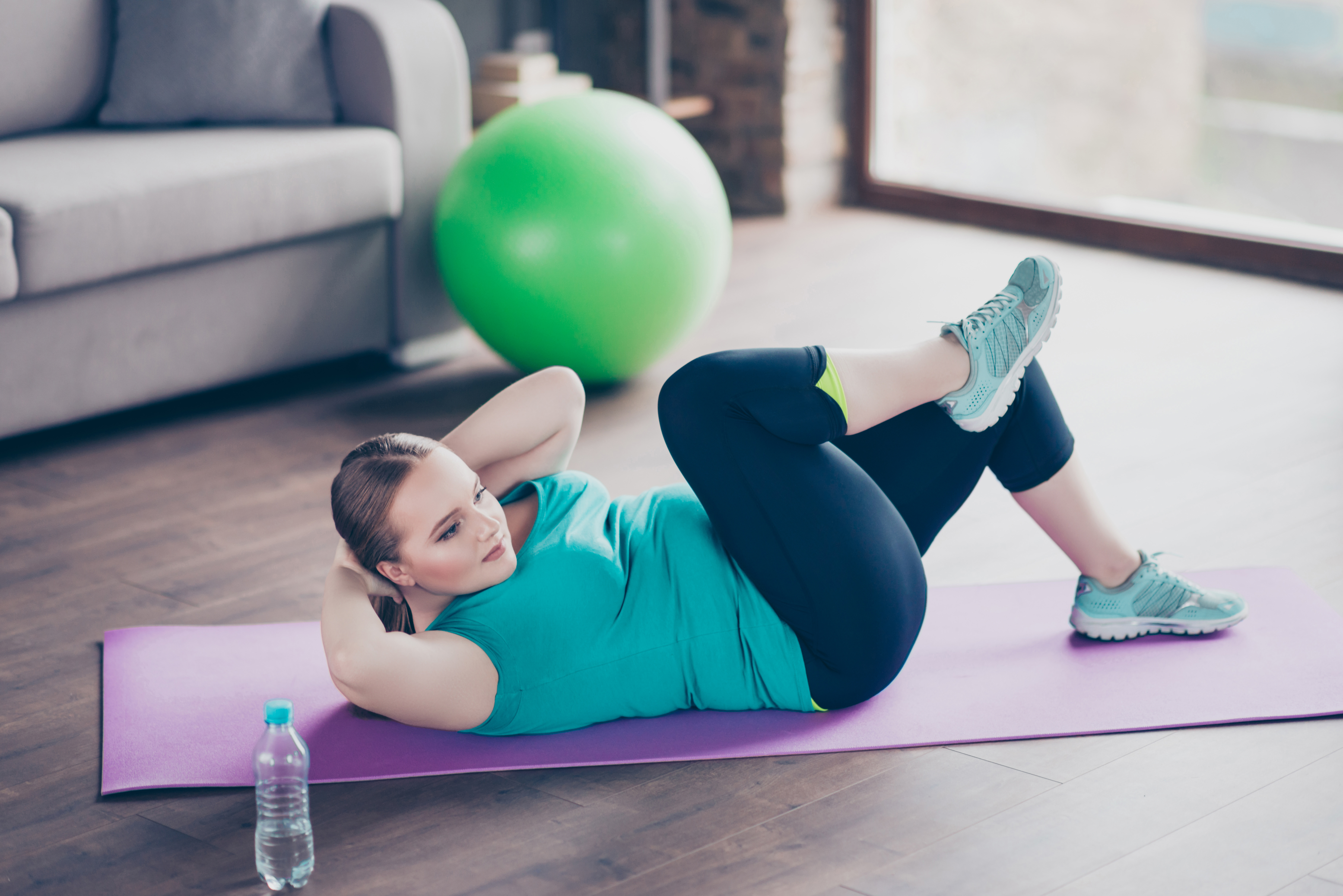During the fall months, the weather cools off and the trees start to change colors. Fall is the perfect time to start hiking. Which is why I designed this ‘at home’ workout to help you become a better hiker.
I think hiking is a great workout for PCOS. Scientific studies suggest that outdoor exercise can help alleviate symptoms of depression (a common issue for cysters). Plus you can invite friends to join you. Social support is an often overlooked part of a PCOS treatment plan.
Recently, my friend Brittany flew in to Costa Rica to pay us a visit (where Colin and I are living at the time of this post). I was so excited to see her and share the beautiful country with my friend. We planned an ambitious day trip to the Poas Volcano National Park and the La Paz Waterfall. Our excursion involved two different treks – one to get a view of the volcano and the other a climb to the top of the La Paz waterfall, which I know would involve several winding flights of stairs.
After an active and exciting day with my friend, I slept very well. But, the next morning, I woke up to a set of incredibly sore legs. My muscle soreness was the result of the body performing a skill it’s not used to performing – climbing up steep hills and stairs all afternoon. My regular workouts had been designed to help keep me lean, strong, energized and healthy, but not to make me a great hiker.
After my adventure with Brittany, I decided to create a workout that would specifically improve hiking skills. My mom was coming in for a visit in a few weeks and I didn’t want a reoccurrence of my post-hike leg soreness.
There weren’t any hiking trails near my casa, so I selected a combination of exercises that would mimic hiking. This workout is designed to increase your muscular endurance while allowing you to practice the skills of climbing hills, stepping up inclines, and balancing – and you can do it at home!
I added this workout into my routine twice a week. When my mom and I did the same hiking trip together, I woke up the next day with absolutely no muscle soreness.
At-Home Workout for Hikers
As always, start with a good warm-up.Do each of these three exercises at a quick pace, in good form, for the prescribed number of reps, then move on to the next exercise.After the third exercise in the circuit rest for 60-90 seconds. Since the primary goal of this workout is to increase your endurance, keep your rest breaks to a minimum.Do this entire circuit of three exercises 4-5 times. Increase your reps as you become more advanced.
Walking Lunges

- Step out with your lead leg, bend your knees and lower your hips. Keep your torso erect with your shoulders directly above the hips. Don’t let your lead knee extend past your toes.
- Inhale and keep the spine neutral as you rise up.
- Step forward with the back leg and lower back into a second lunge.
- As you do additional reps, you will travel across the floor. Beginners start with 20-rep sets (10 each leg). If you’re advanced, go for 30-rep sets (15 each leg).
Inchworm
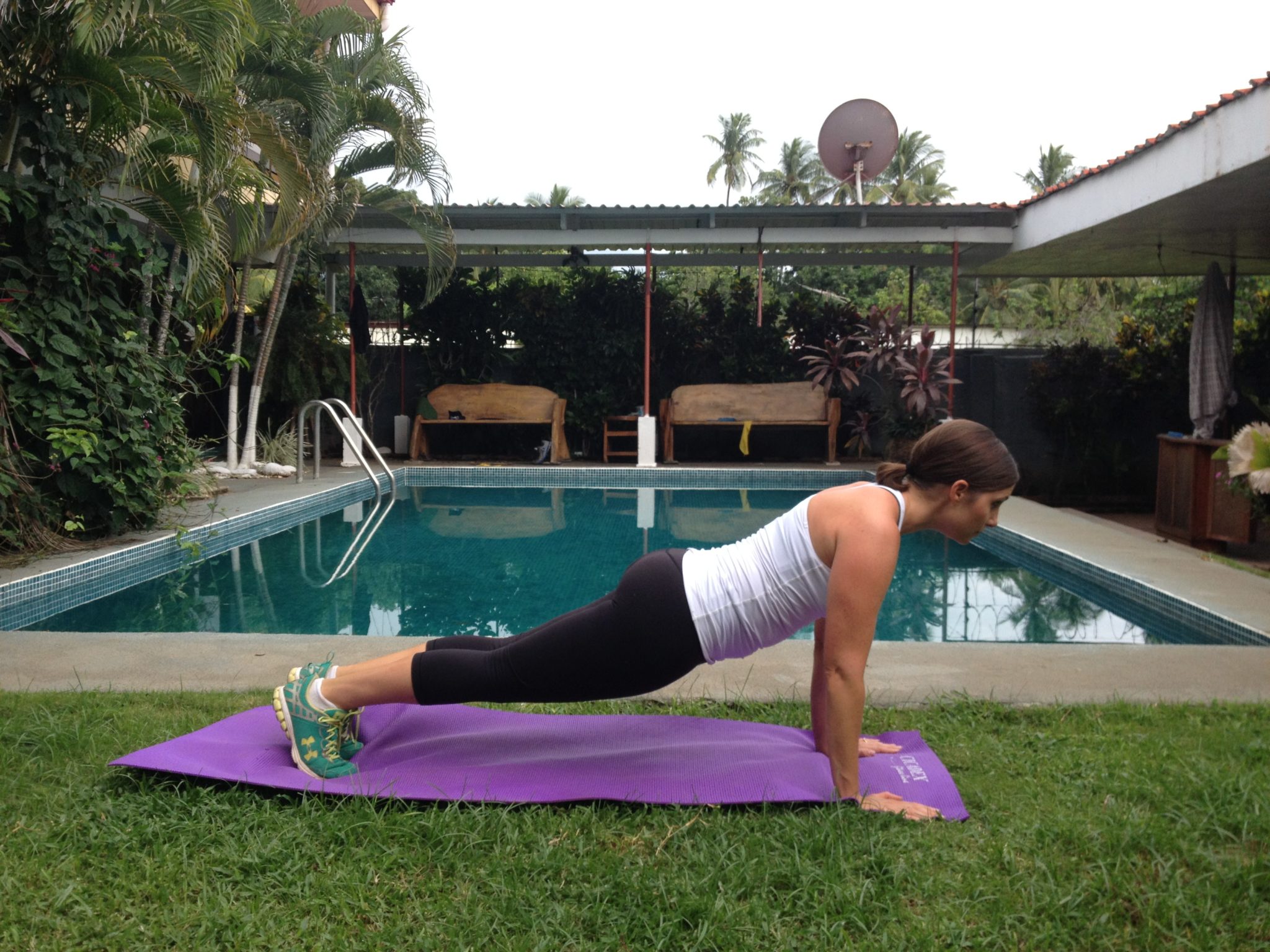
- Squat down so that you can place your hands on the ground in front of you.
- “Walk” your hands out in front of you and extend your body until you’re in a plank position.
- Hold the plank for a count of three. Your hands should be slightly wider than shoulder-width apart and your torso stiff with braced abs. Do not stick your rear up in the air or let your hips sag toward the ground; the glutes should be firm.
- Walk your feet up to meet your hands. Beginners start with 10-rep sets. Advanced, go for 15-rep sets.
Skater Jumps

- Cross your left leg behind your right and lower into a half-squat, your right arm out to the side, and left arm across your body.
- Leap to the left while switching your legs and arms.
- Return to position one by leaping toward your right.
- Beginners start with 20-rep sets (10 each leg). Advanced, go for 30-rep sets (15 each leg).
